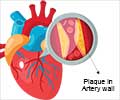High concentrations of blood fats known as triglycerides are common in the United States, according to a report.
High concentrations of blood fats known as triglycerides are common in the United States, according to a report in the March 23 issue of Archives of Internal Medicine, one of the JAMA/Archives journals. Lifestyle changes are the preferred initial treatment for hypertriglyceridemia (the resulting condition), but physical inactivity, obesity and other modifiable risk factors remain prevalent.
"Increasing evidence supports triglyceride concentration as a risk factor for cardiovascular disease," the authors write as background information in the article. "If triglyceride concentrations are indeed a risk factor for cardiovascular disease, then it becomes important to establish the prevalence of hypertriglyceridemia in the U.S. population and to learn about the degree of pharmacologic management of this risk factor."Earl S. Ford, M.D., M.P.H., and colleagues at the Centers for Disease Control and Prevention, Atlanta, examined data for 5,610 participants age 20 or older who participated in the National Health and Nutrition Examination Surveys between 1999 and 2004. The 2,837 men and 2,773 women were interviewed at home and then invited to attend a mobile examination center, where they answered additional questions, underwent examinations and provided blood samples.
A total of 33.1 percent of participants had a triglyceride concentration of 150 milligrams per deciliter or higher (between 150 and 199 milligrams per deciliter is defined as borderline high by the 2001 National Cholesterol Education Program report), 17.9 percent had a concentration of 200 milligrams per deciliter or higher (defined as high), 1.7 percent had a concentration of 500 milligrams per deciliter or higher and 0.4 percent had a concentration of 1,000 milligrams per deciliter or higher.
Compared with those who did not have hypertriglyceridemia, those who did were more likely to be older, be white, have not pursued an education beyond high school, smoke, be overweight or obese or have diabetes. "An important approach to the patient with hypertriglyceridemia is the implementation of non-pharmacological interventions," the authors write.
"The high percentages of participants with a triglyceride concentration of 200 milligrams per deciliter or higher who were overweight or obese, who failed to engage in physical activity for approximately 150 minutes per week or who smoked attest to the challenge confronting health care providers in working with their patients to implement therapeutic lifestyle changes."
A total of 1.3 percent of participants used one of three prescription medications (fenofibrate, gemfibrozil or niacin) that treat hypertriglyceridemia, including 2.6 percent of those with a concentration of 150 milligrams per deciliter or higher and 3.6 percent of those with a concentration of 200 milligrams per deciliter or higher. This may reflect uncertainty about the need to treat this abnormality, the authors note.
Advertisement
"As research clarifies uncertainties in the relation between triglyceride concentration and cardiovascular disease, guidelines to treat hypertriglyceridemia will likely be modified," they conclude.
Advertisement
SRM










